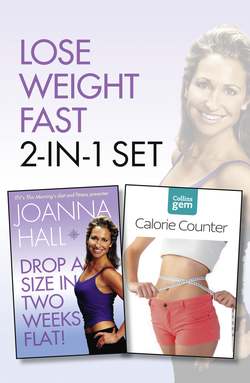Читать книгу Drop a Size in Two Weeks Flat! plus Collins GEM Calorie Counter Set - Joanna Hall - Страница 68
HABIT 1 MOVE MORE, MORE OFTEN
ОглавлениеBy now, you should have got the message that physical activity is an essential part of the weight-loss equation. Exercise boosts calorie-burning muscle mass, helps raise metabolic rate, and makes us feel good. Ask someone if they are physically active and most will remember how they’ve been running around all day and reply “yes”. But think about it. OK, so you may feel “tired” at the end of each day but is it because you were physically active, mentally active, or geographically active? Here’s an example: you wake up in the morning and think “today I have to take the kids to school, finish off that report, get the washing done, work half a day for my job, cook the dinner and do some homework for my evening class” – and that is just the first page on your To Do list. By the end of the day you are tired because you have had a mentally tiring day, having to juggle and complete so many tasks. But none of these has actually involved you moving your body very much. Let’s look at another scenario: this time you have to take the kids to school, drop off the dry cleaning, take a package to the post office, pick up a prescription from the doctor, buy your food shopping from the supermarket, drop in to see a friend who has not been well, run downtown, stop by your office, pick up the kids at 4 p.m., take Johnny to soccer, Elizabeth to piano, the list goes on … All of these involve being in a different place, so you have been active but you have been geographically active – you have covered a great deal of distance but you have done it with a car, bus, or public transportation. You have been all over, traveled great distances but your body has barely moved at all.
So are you geographically active, mentally active, or are you actually physically active? One of the most important habits to try to build in this book is to move your body more often.
Many people say they haven’t got time to be active. It can certainly feel that way sometimes, but think about this … There are 24 hours in the day, and let’s assume we sleep and rest for 9 hours – that leaves 15 hours when we are awake and could potentially be moving our bodies. Multiply that by 7 days a week and that leaves 105 hours a week available to us to move our bodies. Even if you go to the gym three times a week for 60 minutes, that leaves 102 hours of inactivity. So, as you can see, we are expecting a great deal of change in our weight and body-fat levels for our efforts, when effectively, we are only moving our bodies for a mere 3 hours a week. In fact, a study published in the journal Nature found that non-gym goers who were generally active in their daily lives (for example, walking instead of driving, doing manual tasks instead of paying other people to do them) were actually healthier and fitter than gym addicts who sweated it out three times a week but spent the rest of the time immersed in the convenience culture. So what about those other 165 hours? Move more, more often!
